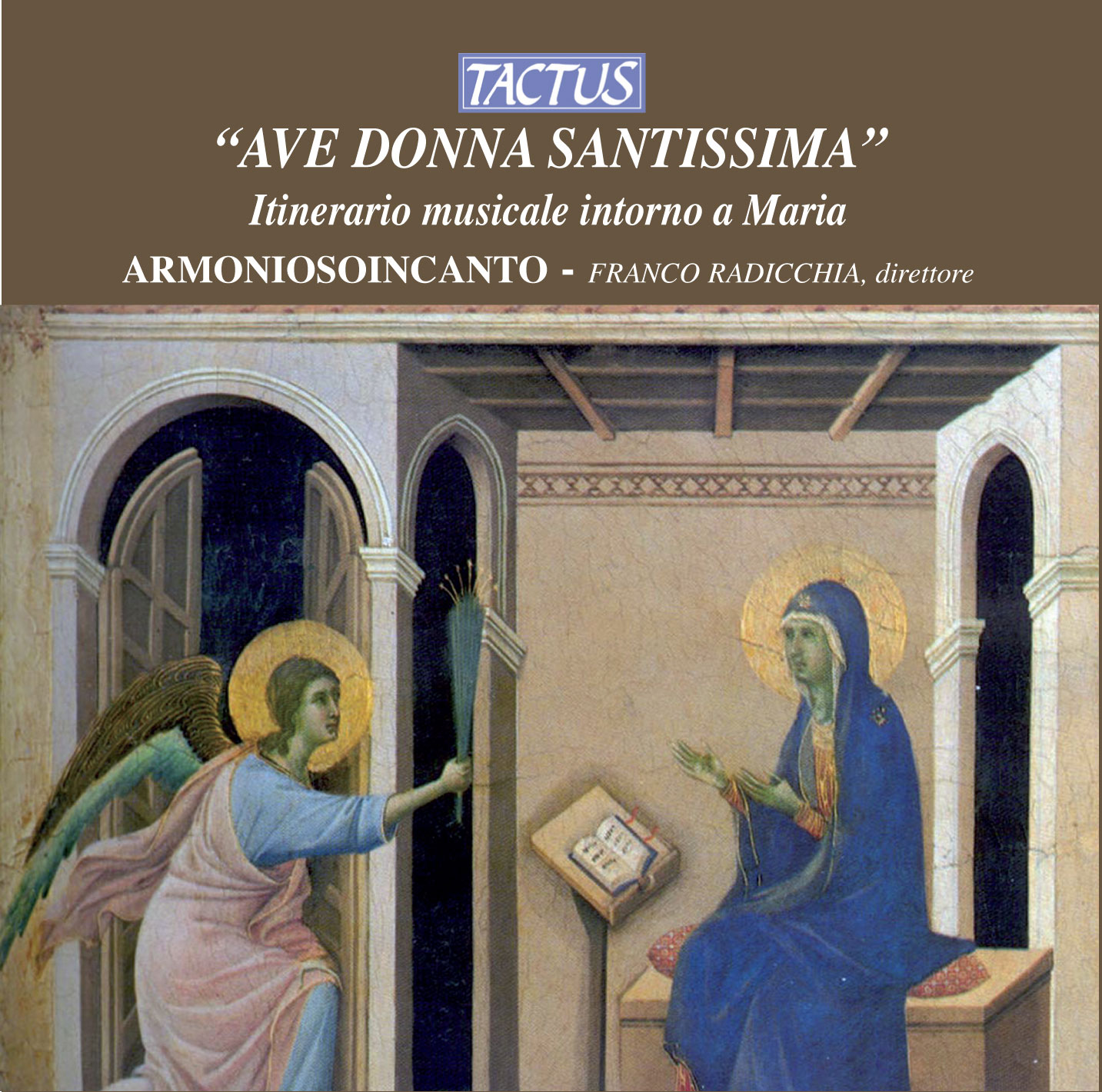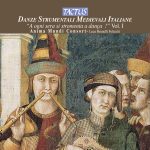ANONIMI
“Music […] objectively concerns nearly all things: God and creatures, ‘incorporeas et corporea’, realities both heavenly and human, sciences both theoretical and practical.
Between the 13th and 14th centuries, the development of the Faculty of the Arts, the Franciscan orders, the confraternities, and the “temporality” of the Church all strongly contributed to a series of cultural innovations throughout Europe.
An example of this is the appearance of a vast number of compositions dedicated to the cult of the Virgin, as demonstrated by the laudas, cantigas, or the Miracles of Notre Dame by G.
de Coincy.
Why such a movement would have been expressed through vernacular poetry set to music, in diversified cultural and social circles, is still the object of discussion.
Similarly, a lively debate centers on the question of musical influences which gave rise to the distinct forms of paraliturgical music, destined to cross the thresholds of ecclesiastical walls in order to cohabitate with a lay society, and particularly with the corporations.
This production is significant thanks to the freeing influence of the Lateran Council IV (1215), which incited the battle again heterodoxy and stimulated Marian devotion, adopted as anti-heretical propaganda.
Musical compositions enjoyed a rapid diffusion in the courts and among the laypeople, encouraged by the work of the mendicant orders, especially the Franciscans, who saw the realization of their ideals in the lay and “vulgar” pietas.
In the manuscript Cortonese 91, the rapport between man and morality is supported discretely, and is a Summa of the philosophical speculation typical of mysticism at that time: “Chi vol lo mondo despreççare sempre la morte dea pensare” (“He who desires to despise the world must always think of death”).
The first sixteen melodies in this manuscript are a continuous call to the Marian cult.
Monodic, in amensural square notation and simple form, they consist of a reprise, a stanza and again the reprise.
The linguistic character is contiguous with the complex poetic world of the period: “Stando al mondo senza ‘l mondo tutto fo per te giocondo, lo supremo e’l profondo” (“Being in the world, without the world, I do everything for you playfully, both the supreme and the profound”).
Tracklist
Anonymous
Verbum bonum et suave [Sequenza, Biblioteca Apostolica Vaticano Sequenziario Domenicano, sec. X]
1 - Verbum bonum et suave [Sequenza, Biblioteca Apostolica Vaticano Sequenziario Domenicano, sec. X] (2:45)
Ave donna santissima [Lauda III, Laudario di Cortona no. 91, sec. XIII]
2 - Ave donna santissima [Lauda III, Laudario di Cortona no. 91, sec. XIII] (8:52)
Kyrie: Summe rex [Tropo, Codice Cantorino di Reims no. 695 (fogli 15v-16v), 1262]
3 - Kyrie: Summe rex [Tropo, Codice Cantorino di Reims no. 695 (fogli 15v-16v), 1262] (4:56)
Ave virgo gratiosa [Sequenza, Biblioteca Apostolica Vaticana Sequenziario Domenicano, sec. XV]
4 - Ave virgo gratiosa [Sequenza, Biblioteca Apostolica Vaticana Sequenziario Domenicano, sec. XV] (5:03)
Salve Regina [Antifona Mariana Domenicana I modo, sec. XIV]
5 - Salve Regina [Antifona Mariana Domenicana I modo, sec. XIV] (4:19)
Altissima luce [Lauda VIII, Laudario di Cortona no. 91 sec. XIII]
6 - Altissima luce [Lauda VIII, Laudario di Cortona no. 91 sec. XIII] (2:54)
Laude novella [Laudario di Cortona (Ms. 91, Biblioteca Comunale di Cortona]
7 - Comunale di Laude novella [Laudario di Cortona (Ms. 91, Biblioteca Cortona)] (2:08)
Dove vai, Matre Maria [Canto Devozionale Umbro per le Rappresentazioni Popolari del Venerdì Santo]
8 - Dove vai, Matre Maria [Canto Devozionale Umbro per le Rappresentazioni Popolari del Venerdì Santo] (3:55)
Stabat Mater [Sequenza su melodia popolare umbra per le Rappresentazioni Popolari del Venerdì Santo]
9 - Stabat Mater [Sequenza su melodia popolare umbra per le Rappresentazioni Popolari del Venerdì Santo] (5:14)
Gaude dei genitrix [Sequenza, Codice Cantorino di Reims no. 695 (fogli 111-111v), 1262]
10 - Gaude dei genitrix [Sequenza, Codice Cantorino di Reims no. 695 (fogli 111-111v), 1262] (2:02)
Sanctus: Voci Vita [Tropo, Codice Cantorino di Reims no. 695 (fogli 52v-53v), 1262]
11 - Sanctus: Voci Vita [Tropo, Codice Cantorino di Reims no. 695 (fogli 52v-53v), 1262] (3:47)
Laudemus Virginem - Splendens ceptigera [Livre Vermeil, sec. XIV]
12 - Laudemus Virginem - Splendens ceptigera [Livre Vermeil, sec. XIV] (2:28)
Verbum bonum et suave [Sequenza, Codice Cantorino di Reims no. 695 (fogli 238v-239v), 1262]
13 - Verbum bonum et suave [Sequenza, Codice Cantorino di Reims no. 695 (fogli 238v-239v), 1262] (2:35)
- Composer: ANONIMI
- Performers: Ensemble Armoniosoincanto: Caterina Becchetti, Elisabetta Becchetti, Federica Gregori, Monica Grelli, Monica Mariucci, Francesca Piottoli, Valeria Puletti: voice, viella; Brunella Spaterna: voice, harp; Giovanni Brugnami: flute; Massimiliano Dragoni: dulcimer, bells, drum; Franco Radicchia: Conductor.
- Historical Period: Middle Ages
- Code: TC 260001
- Edition: NOVEMBER 2006
- Barcode: 8007194103946
- Set: 1
- Total tracks: 13
- Total duration: 00:50:58






